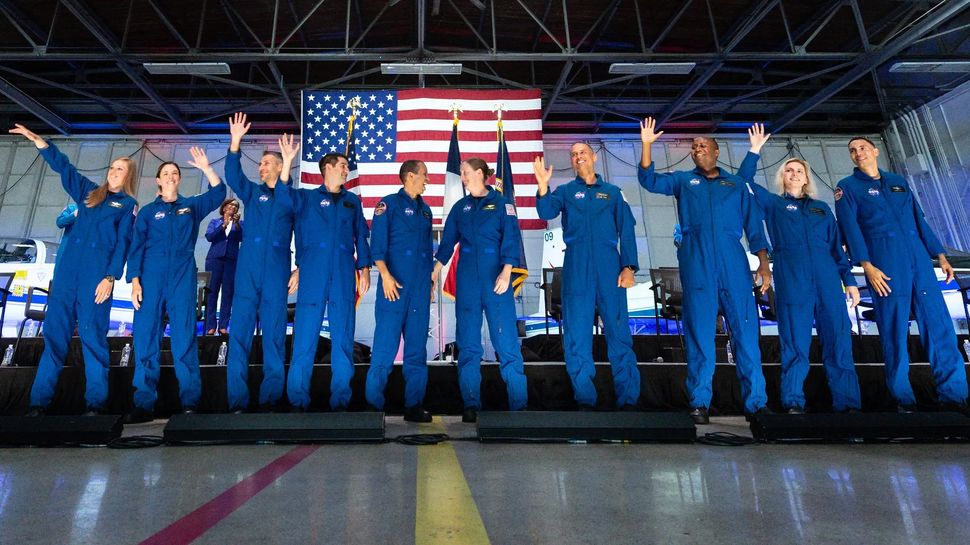NASA’s latest group of astronaut candidates will graduate Tuesday (March 5) alongside two candidates from the United Arab Emirates (UAE), and you can watch it live.
NASA Group 23 of astronaut candidates, informally known as “The Flies”, will become eligible for space missions alongside the second astronaut candidate group from the UAE. You can watch their graduation ceremony at NASA’s Johnson Space Center in Houston here at Space.com, via NASA Television, starting at 10:30 a.m. EST (9:30 a.m. local time or 1530 GMT).
The 12 astronaut candidates, all selected in 2021, have completed 2.5 years of basic training. Their graduation to full astronaut status means they are all eligible for a spaceflight, although that may not happen right away depending on the needs of the space program.
Related: Watch NASA announce its next astronaut class in this webcast replay

The new astronauts are on the eve of a huge shift in the human spaceflight program. The class will likely witness the end of the International Space Station (ISS) program, now expected no earlier than 2030, and the transition to new commercial space stations that will host professional astronauts.
If all goes to plan, this group will also fly to the moon’s surface and to NASA’s lunar-orbiting Gateway space station to support the Artemis program that aims to land astronauts at the moon’s south pole no earlier than 2026. This will make The Flies among the first astronauts to do moon missions since the Apollo astronauts of the 1960s and 1970s, more than half a century ago.
As a group, the graduating class undertook duties ranging from wilderness expeditions to testing spaceflight systems to learning how to work in groups in isolated situations.
Additionally, they learned the mechanics of what they’ll need to do in space: “All astronaut candidates have completed training in spacewalking, robotics, space station systems, T-38 jet proficiency, and Russian language,” NASA officials stated.
Mission training itself may also take years more. A usual half-year ISS rotation on SpaceX‘s Crew Dragon, Boeing’s Starliner or Russia’s Soyuz usually requires at least two years of training, although shorter missions mean less time. Artemis moon missions, which will last up to 30 days in the medium term, also require long training cycles because they are both complex and developmental.
The full list of graduating astronaut candidates are:
- Nichole Ayers (NASA) major, U.S. Air Force;
- Marcos Berríos (NASA) major, U.S. Air Force;
- Chris (Christina) Birch (NASA), a bioengineering and scientific writing and communication professor who was a track cyclist on the U.S. National Team;
- Deniz Burnham (NASA), who managed drilling projects on oil rigs and who served in the U.S. Navy Reserves as an engineering duty officer;
- Luke Delaney (NASA), major, retired, U.S. Marine Corps and former research pilot at NASA’s Langley Research Center in Virginia;
- Andre Douglas (NASA), formerly a senior staff member at the Johns Hopkins University Applied Physics Lab in Maryland;
- Jack Hathaway (NASA), commander, U.S. Navy;
- Anil Menon (NASA), lieutenant colonel, U.S. Air Force;
- Christopher Williams (NASA), former medical physicist at the Brigham and Women’s Hospital and Dana-Farber Cancer Institute in Boston;
- Jessica Wittner (NASA), lieutenant commander, U.S. Navy;
- Nora AlMatrooshi (UAE), formerly a piping engineer at the National Petroleum Construction Co.;
- Mohammed AlMulla (UAE), formerly head of the training department of the Air Wing Centre at Dubai Police.